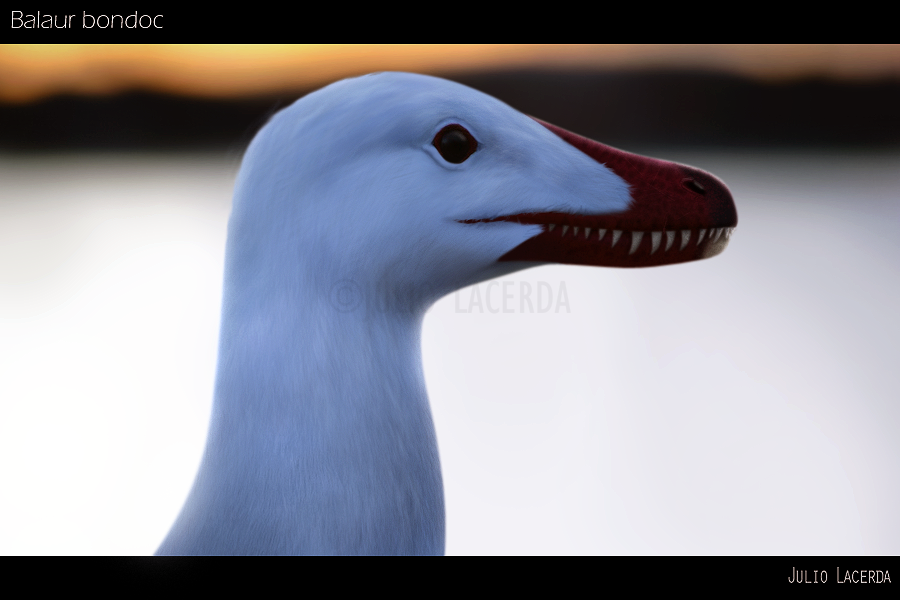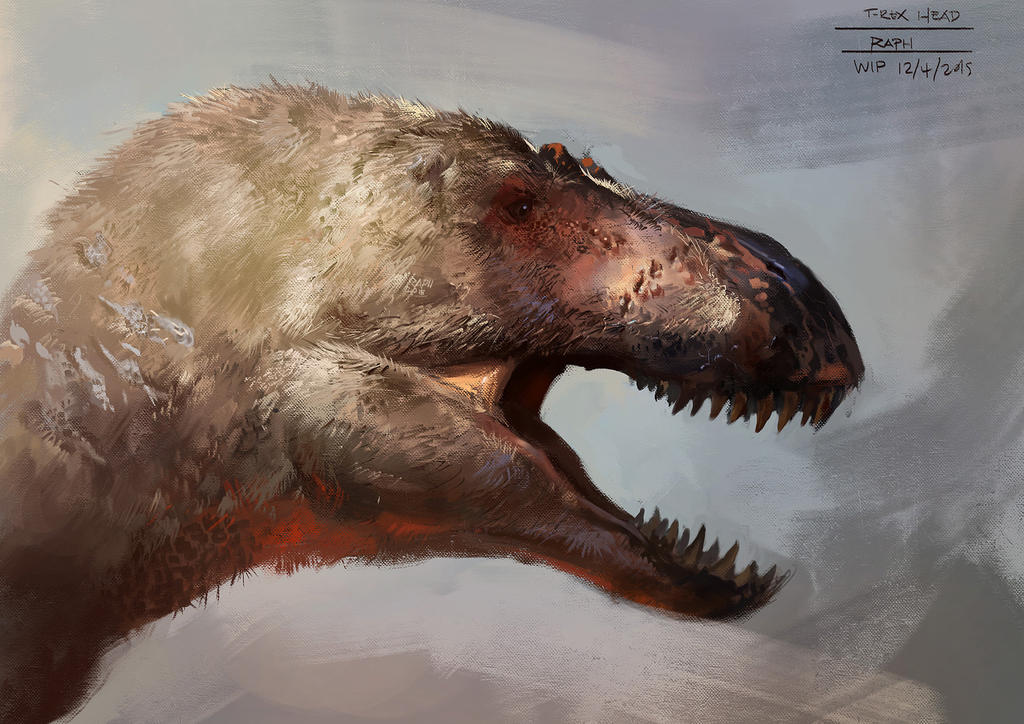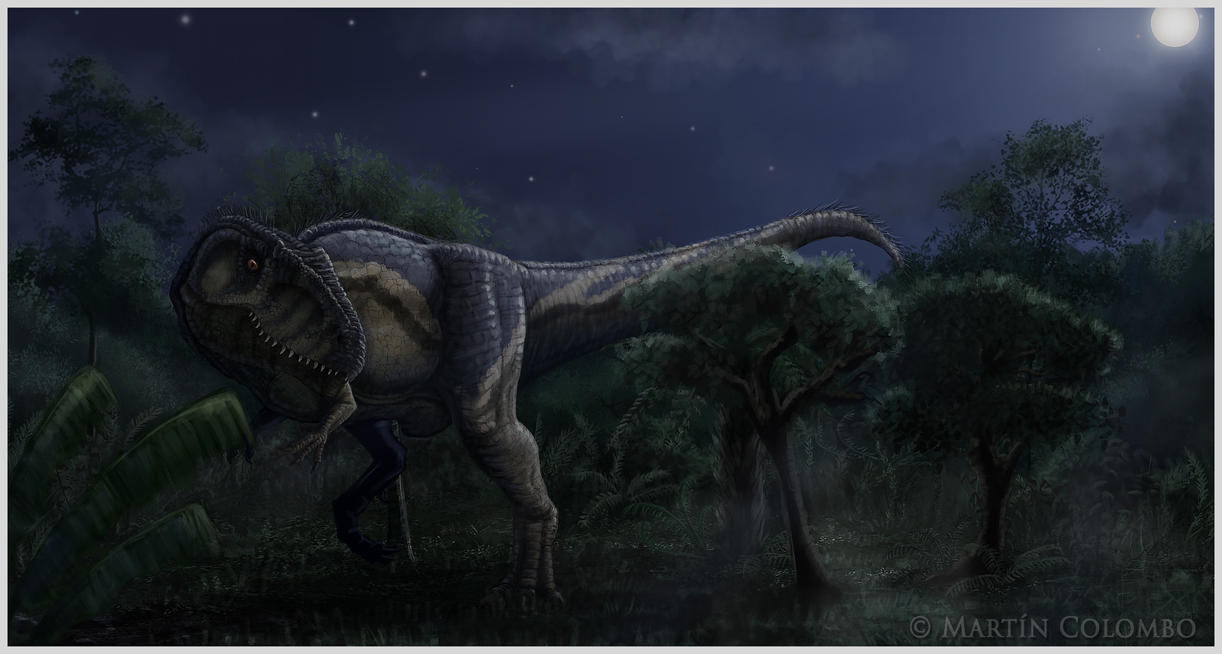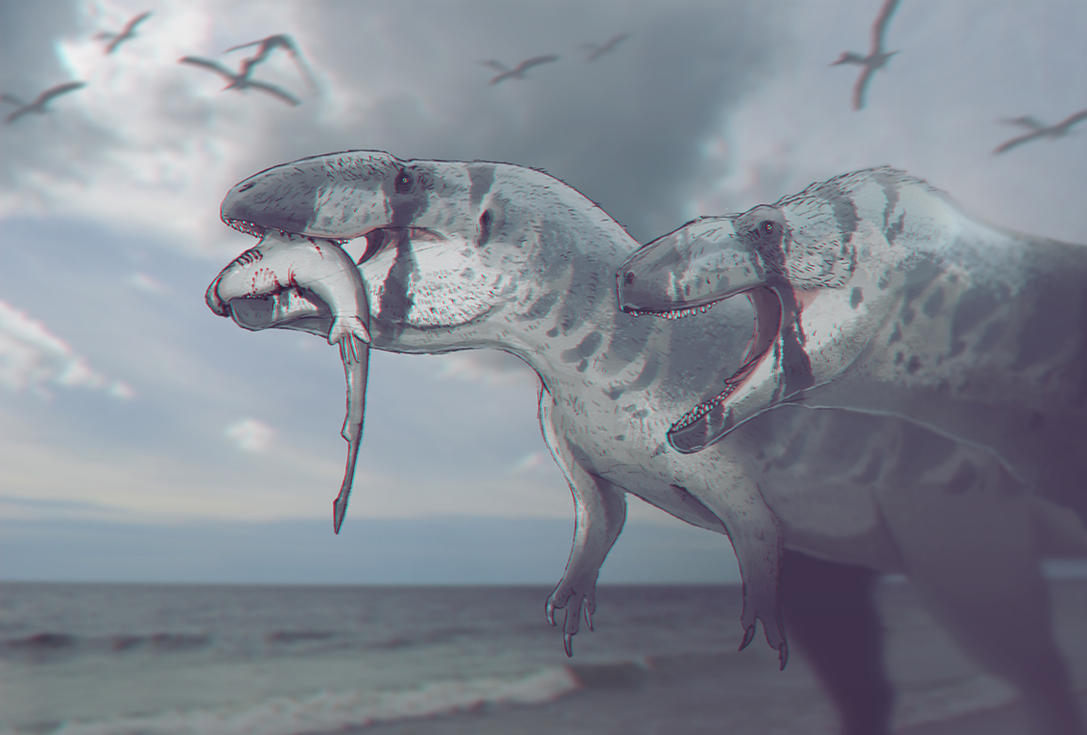The Last List: Top 6 Largest Theropods
Dinosaurs Forum Topic

Gigadino
MemberCompsognathusMay 17, 20178980 Views0 RepliesI made a lot of top 10 of largest Theropods - hell, I even made a top 50. I'm actually a bit obsessed with size of Megatheropods, but whatever. The one you are going to read will be the real, last, definitive one. Unlike my previous one, it WON'T be based on average size, but on largest specimens.
1. Tyrannosaurus rex

I propose to make this animal the type of the new genus, Tyrannosaurus, in reference to its size, which far exceeds that of any carnivorous land animal hitherto described...This animal is in fact the ne plus ultra of the evolution of the large carnivorous dinosaurs: in brief it is entitled to the royal and high sounding group name which I have applied to it.
Henry Fairfield Osborn, 1905
Well, a lot of time has passed since Osborn stated that. When he stated that, no Theropod could rival in size with T. rex and of course its discovery was something of exceptional back in early 20th century. However, while we know that Theropods that could rival T. rex in size existed, our fellow Tyrannosaurid is still an enormous guy. Not only that: its largest specimens, like 'Sue', are probably the heaviest known Theropod specimens, topping at 8000-8500 kg. And while it wasn't 14 or 15 m long, estimates that were based on wrong recostructions, largest T. rex specimens are roughly 12 to 12.5 m long and as tall as 3.5 m, making this animal very big even in linear dimension. Largest skulls of the Tyrant are over 1.5 m long, with some teeths topping at 30 cm long. Just keep in mind, though, that those behemots are the largest specimens in a large sample. Most of known specimens are 10 to 12 m long and well less than 7000 kg in weight. Thus, while largest known Theropod specimens belong to this genus, Tyrannosaurus is not the largest known Theropod - to assert such a thing, we'd need more specimens of other giant Theropods. Last but not least, fragment of possible behemots exist, that would indicate specimens longer than 13 m. Those guys are doubtful and various estimates have indicated that they probably were roughly the size of 'Sue'; thus, they are not taken in account.
2. Spinosaurus aegyptiacus

It is a really bizarre dinosaur - there's no real blueprint for it. It has a long neck, a long trunk, a long tail, a 7ft (2m) sail on its back and a snout like a crocodile. And when we look at the body proportions, the animal was clearly not as agile on land as other dinosaurs were, so I think it spent a substantial amount of time in the water.
Nizar Ibrahin, 2014
If your nephew ask you, in a remote future, what 2014 meant to dinosaurs, you will probably make him read this quote. Once thought to be a normal Carnosaur with a veil, nowdays we know that it was an affascinating Theropod... but I think you all by now know what I'm talking about. There was a lot of talk about this guy, especially about its posture. While there are still a lot of things to be discivered about this animal, what we can assert for sure is that it was really big. MSNM V4047 is the largest specimen known, and it was probably as long as 15 m, making it the longest known Theropod specimen. Weight is a different matter. Once thought to be more than 10 tons in mass, more recent estimates made by amateurs and paleontologists put it to an lighter yet still impressive 7000 to 7500 kg, making it sligthy lighter than 'Sue', but heavier than most of other Theropods. Its skull, which is estimated to be over 160 cm, may have been the longest Theropod skull known.
3. Giganotosaurus carolinii

I think Giganotosaurus epitomizes what people are expecting in their imaginations when we talk about giant predatory dinosaurs. It's stocky and overbuilt, but not in the "weight-lifting ballerina" style of T. rex. Instead, it's basically just a really big carnosaur with a big head.
Scott Hartman, 2012
As I said before, T. rex was once thought to be the unrivalled giant among the Theropods. The first animal to question the Tyrant's record was this guy, discovered back in early 90s in South America. At the time of the discovery, he was immediately labelled as 'the biggest terrestrial Theropod'. That was a bit of sensationalism, though. While earlier estimates suggested that G. carolinii was 14 m long or so, that was based on an excessively long tail. While calculating G. carolinii size is still a pain, since the most complete specimen, the holotype (MUCPv-Ch1), hasn't been properly described yet, various estimates have been made on the aforementioned specimen, putting it at roughly 12.2 to 12.5 m, thus reaching or even exceeding the 'Tyrant Lizard' in lenght; however, it probably didn't weight as much, topping at 7000 kg, which is still huge. There's a famous, second specimen - MUCPv-95. It's just a dentary which is often said to be 2.2 to 8 % larger than the holotype. However, there are a lot of problems with this specimen, and of course we can't be sure about its size - it may just have been a big-headed individual, or an extremely small-headed one, who knows? As for other extremely fragmentary specimens, I personally believe we can't assert anything about this particular specimen that is not a speculation; thus, I don't usually take it in account.
4. Mapusaurus rosae

Scientists are learning more about what appears to be one of the biggest meat-eating dinosaurs known, a two-legged beast whose bones were found several years ago in the fossil-rich Patagonia region of Argentina.
CBS News, 2006
This quote efficiently epitomizes the reaction of the wider public to the discovery of pratically every giant Theropod. Mapusaurus was no exception. Talking about the size of this guy, we are a bit luckier than in its fellow Carcharodontosaurid G. carolinii case, since we have a lot of specimens, ranging from small subadults to large adults. This can give you an idea of what I meant when I said that T. rex was no largest Theropod - in fact, while the largest specimens can rival in size with G. carolinii holotype, the smallest adult ones are 10 to 12 m long. Its size was thus no different from other giant Theropods; however, there's a fragmentary giant even in this case. The supposed largest specimen is, in fact, an individual represented by a pubic shaft, which is 10 % larger than the corresponding part in Giganotosaurus holotype, making it 13.4 to 13.7 m long. Of course, there are a lot of problems with this particular guy; scaling a fragment from a different genus is, for example, unsafe to say least. Mapusaurus fans don't have to cry however - in fact, other material can assure us that large Mapusaurus specimens were roughly as big as Giganotosaurus holotype - 12.2-12.5 m long and 6000-7000 kg in weight.
5. Deinocheirus mirificus

I was just blown away
Currie, describing his feelings when he realized he had solved Deinocheirus mystery
I have a 70s book which shows a possible recostruction of this guy as a fearsome, yet generic meat eater. I thought it was very cool back when I was a child; now, I think that the true animal is much cooler. Deinocheirus is the other dinosaur that was 're-discovered' in 2014. It turned out that he was a completely unique and strange animal, even stranger than Spinosaurus. Plus, the new material can give us more information about the size of this guy. While once thougt to be 8 to 20 (!) m long, nowday we can safely assert that the largest specimen found probably stopped at roughly 9.5 m in linear size, making it much shorter than the other guys in this list. However, lenght isn't what interests us most. The massive built of this guy made it tremendously heavy: the largest specimen was probably somewhere between 6500 to 7000 kg. Deinocheirus was very tall too, probably the tallest Theropod known.
6. Carcharodontosaurus saharicus

Carcharodontosaurus is Africa’s answer to Tyrannosaurus. One of the largest carnivores that ever walked on earth, Carcharodontosaurus, had 6-inch-long serrated teeth.
Paul Sereno on his website
A student of paleontology once told me that paleontologists like their discoveries to be the largest, the meanest, the best of their kind. The fact that Sereno called his animal the largest Theropod, even engaging Coria (one of Giganotosaurus' discoverer) in a short-lived size contest, doesn't surprise me. Factually, Carcharodontosaurus was a gigantic Theropod; however, it's so fragmentary that it's difficult to extrapolate a 100 % accurate size estimate. We have to work on more complete animals. To get a 14 m behemot, one should use Acrocanthosaurus; however, that is not likely. Carcharodontosaurus was probably more similar to Giganotosaurus and Tyrannotitan in overall proportions, making the largest known specimen, SMG din-1, close to 12 m in lenght and not heavier than 6000-6500 kg. Even though C. saharicus largest specimen is not as large as G. carolinii or M. rosae, it is still huge, and its skull, which is 150 cm long or so, can give a good idea on the sheer size of the animal we're talking about.
Replies to The Last List: Top 6 Largest Theropods
Hey Guest, want to add your say?
Are you an avid Jurassic World fan looking for a dedicated online community of likeminded fans? Look no further! Create your own profile today and take part in our forums and gain XP points for all the content you post!









